William Holman Hunt (2 April 1827 – 7 September 1910) was an English painter known for his incredibly intricate paintings and clever use of color. He also founded the Pre-Raphaelite Brotherhood in 1848, which was a group of artists who rejected the mechanistic approach adopted by artists who succeeded Raphael and Michelangelo.

He was actually not all that successful initially and was criticized for alleged clumsiness in his works (which seems like harsh criticism based on his paintings). He eventually became famous for his detailed religious paintings, such as:



But I am not writing about Hunt for his religious paintings. Instead, I am writing about Hunt for his naturalistic animal paintings which I am fascinated by. The painting below is how I become familiar with Hunt’s work and it is still my favorite. The painting demonstrates an incredibly high level of detail and some clever use of color. It almost looks surreal.
There is a beautiful contrast between lights and darks. Interestingly, Hunt retained a high level of detail even in the darks. I usually prefer to leave the darks to be slightly ambiguous. The faded background also gives you a break from the intricate detail and creates a sense of depth in the painting.
If you look closely, you can break the painting into three areas – the foreground with the detailed sheep and vegetation; the middle ground with relatively less detail and some interesting shapes and patterns; and finally the background which provides a gradual decline in color and detail until you are left with nothing but a faint tint of color.
Even if you are not a fan of this style of painting, you have to admire the level of craftsmanship.

Here is a similar painting by Hunt named “The Scapegoat”. In the Bible, a scapegoat is an animal which is ritually burdened with the sins of others then driven away. So there seem to be strong religious undertones even in this painting.

I wish Hunt had created more of these naturalistic animal and landscape paintings, but the focus seemed to be on the religious settings.
(Before diving into this post, make sure to pick up a copy of my free Landscape Painting Starter Kit.)
What You Can Learn From William Holman Hunt
Hunt’s style is not for everyone. But regardless of whether you like the style of not, you can learn much from the incredible display of detail and use of color.
Hunt also provides some great demonstrations of how to paint realistic animals. I personally think he painted the animals more skillfully than the human subjects. It is unfortunate that there only seems to be a handful of these animal paintings by Hunt, as he clearly favored religious settings.
Want to Learn More?
You might be interested in my Painting Academy course. I’ll walk you through the time-tested fundamentals of painting. It’s perfect for absolute beginner to intermediate painters.
Thanks for Reading!
I appreciate you taking the time to read this post and I hope you found it helpful. Feel free to share it with friends.
Happy painting!
Dan Scott

Draw Paint Academy

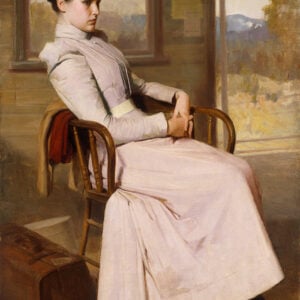
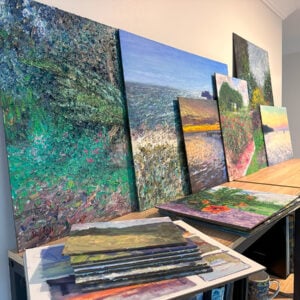

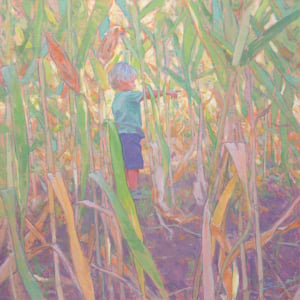
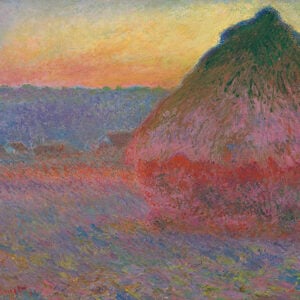
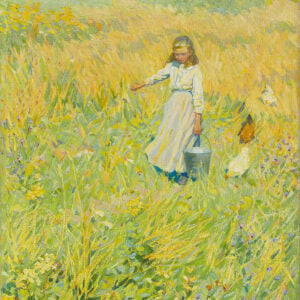
Re: william holman hunt, how unusual to be using those colours during the 1800’s . In an elderly relations house during the 1930’s I remember their pictures were all dark and dismal, just think what they had missed. I too like the strayed sheep picture, the animals actually looked to be quite individual characters, thank you, Hazel
Thanks Hazel! Dan
Lovely detail paint work…
Hi Dan, Yes I also like the animal paintings of William Holman Hunt. His use of colour and detail is extraordinary.
I don’t know if I am seeing something intended by Hunt, but did you notice the large dark shape in the strayed sheep painting, it looks like a sheep lying down, with its head sloping down at the top left corner. ?? As if the land is a type of sheep also gone astray ?
Umberto Pardini
Interesting observation Umberto. Whether or not it was intended we will never know! Dan
Thank you for this text. I’m interested on more of your observations and examples. It is very educative how to analise and what to look on the paintings.
Best regards
Thanks Ina, glad you enjoyed it! Dan
Love learning about certain artists I may not have heard of. Especially liked “The Light of the World” for its use of color and light. At some point, could you perhaps recognize the contributions of a female painter of renown.
Hi Linda, you are right. I will look into that for the next post 🙂
Dear Dan, somehow I’ve lost your article ‘Seascapes’ but I wondered if you had found Donald Demers, F.J waugh and my favouurite Charles Vickery seascapes, also someone very different Matthre Snowden , so few brush strokes and so effective, hope you enjoy their seascapes, regards Hazel
Hi Hazel. Here is the Seascape post. https://drawpaintacademy.com/seascape-painting-inspiration/
I was aware of Waugh but not the others. Thanks! I might even update the post.
Cheers!
Dan